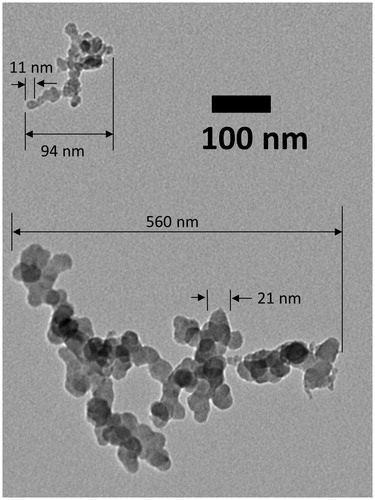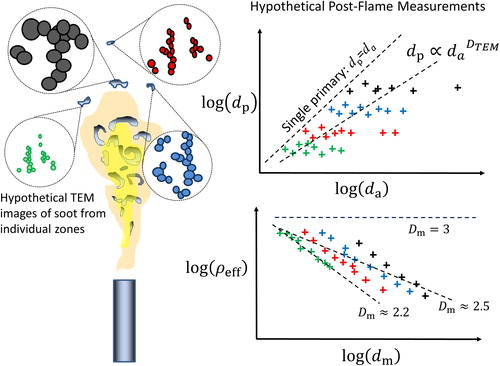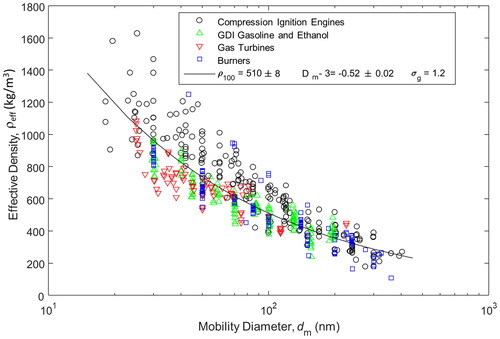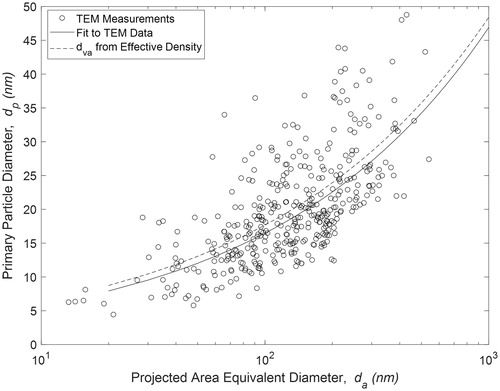Figures & data
Figure 1. Typical transmission electron microscopy (TEM) image of soot from a large laboratory scale turbulent, nonpremixed flame.

Figure 2. Schematic of the “external mixing hypothesis”: different flame zones would produce aggregates (green, blue, red, black) with primary particle size d p independent of area-equivalent diameter d a (upper right hypothetical graph). Effective density plotted in lower right panel.

Table 1. Summary of fit parameters for studies including both effective density and TEM measurements.


